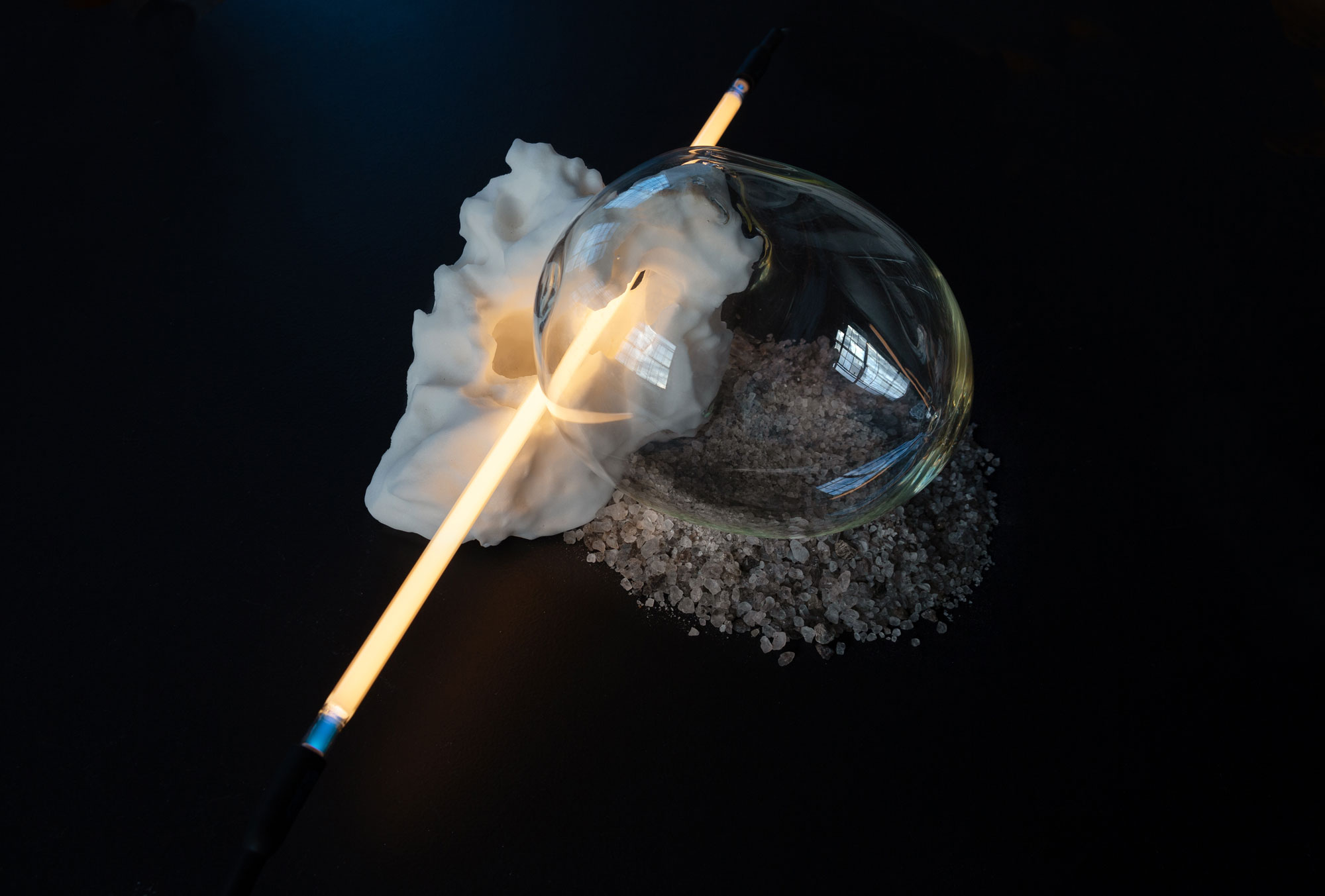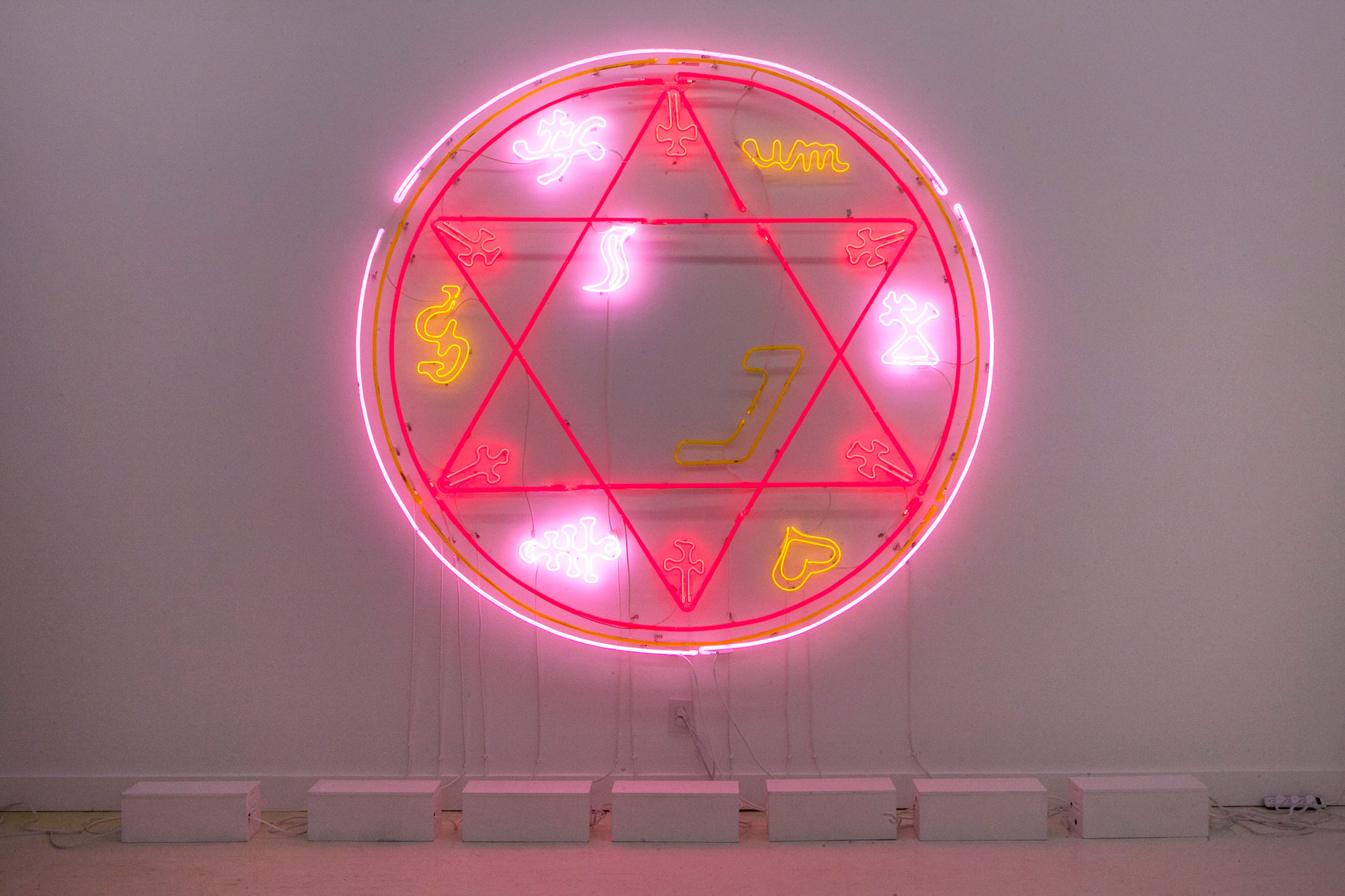Neon art is elemental (in the periodic table kind of way). Sure, plenty of sculpture is made out of gold, silver, copper or iron, but these are all fairly run-of-the-mill metals. They behave in fairly run-of-the-mill ways.
But put an electric charge into a tube of helium, argon, neon or krypton, and seemingly magical things happen. All of those zaps and sizzles can be explained by science, but the gasses will also behave as they see fit — and therein lies one aspect of the medium’s artistic appeal.
At the Contemporary Jewish Museum, the organization She Bends has curated a group show of neon, glass, plasma and installation work for First Light: Rituals of Glass and Neon Art, on view through April 28. It’s an exhibition that not only challenges commercial uses of neon but the traditionally masculine world of its making. And while the nine artists included in First Light approach glass and neon in vastly different ways, they share an openness and enthusiasm about their processes, turning this humming, glowing assembly of works into a uniquely welcoming art show.

Most notably, we don’t get simply their artwork, but two displays demonstrating just how neon gets made. At the first one, a lightly scorched bending table scattered with paper patterns shows how straight tubes become three-dimensional objects through precise heating and careful pressure. In the final galleries, we see a mock-up of a bombarding table, complete with the valves, tubes and gauges used to heat impurities out of a glass tube, create a vacuum, pump in noble gas and electrify it.
Easy, right? It is eminently clear from the outset of First Light that this is a persnickety and highly technical art form. And yet most of the artists in the show push well beyond the already-complicated norm, both expanding and deconstructing our idea of neon.
On the expansive side, take Angelina Almukhametova’s Rhizome Intermezzo No. 20, a multimedia collaboration with Dan Disciglio. Bright white beads of krypton run through clear glass tubes shaped to echo the missing branches and roots of an attached tree stump. A sound element uses the wood’s resonance and converts the electromagnetic pulses of the transformers (which power the neon) into a cyclical buzz and hum.
Or look to Kamila Mróz’s sculptures, which allow the electrons inside a more freeform path. In her impossibly delicate “crown” of glass, thrilling forks of light bounce in and out of the crown’s leaves, lending an eerie aliveness to her work. (Picture a grown-up, extremely sophisticated plasma ball, but no touching, please.)

Mroz’s pieces are made from flameworked borosilicate, which Meryl Pataky (the founder of She Bends) also uses in a series of sculptural candle holders. These are some of the most ethereal and otherworldly works in the show — with the noble gasses less constrained by a standardized tube, they retain some of their (for lack of a better word) gassiness. It’s in these moments that the truly out-there science of it all hits hardest.
Driving this point home is Kacie Lees’ work, which distills neon down to those aforementioned elements. In two wall installations activated by the audience, she nods to the cosmic origins of the materials neon artists use. In The Deep Field, a black-flocked wall displays Webb’s First Deep Field image, inviting museum visitors to inscribe their own responses with colored pencil onto this origin story of the universe.
In The Vivid Unseen, Lees has blended phosphor powder into paint, creating a dazzling large-scale mural that’s only visible in small doses, with the help of a handheld UV flashlight. Passing the flashlight over the mural, fluorescent colors and splashes explode across the surface of an otherwise white wall. The experience is one part Lascaux cave paintings, one part CSI.
She Bends and the Contemporary Jewish Museum have executed an impressive feat with First Light: it’s an educational show that isn’t dull or overwhelming. Instead, it presents wholly inventive combinations of media. And most importantly, it opens up avenues of delight and wonder. I doubt visitors will look up at neon — or the stars — in the same way ever again.

‘First Light: Rituals of Glass and Neon Art,’ on view at the Contemporary Jewish Museum through April 28, 2024.